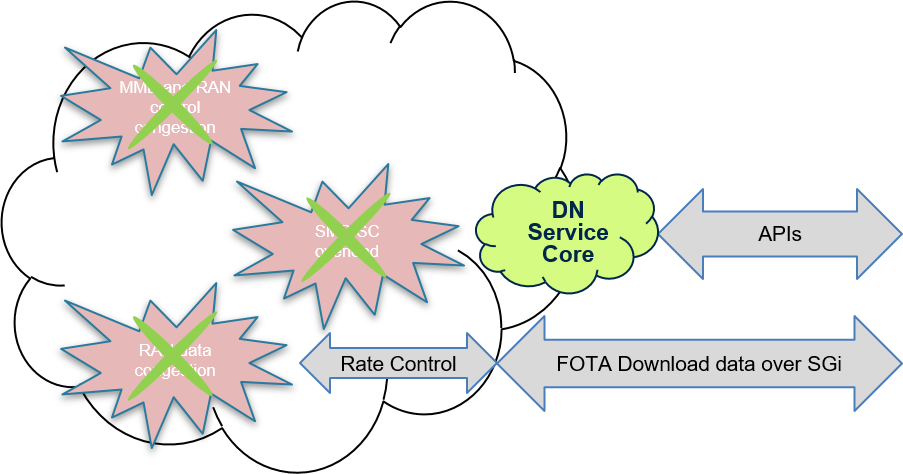Congestion Avoidance
Avoiding congestion is important to Operators. Without congestion avoidance mechanisms, the Operator requires additional Opex/Capex to overprovision the network to mitigate congestion.
One source of congestion in the Operator’s network is signaling and messaging congestion. This may occur when the network nodes cannot support the control message rate, or when there is too much of a demand for Control Channel Elements (CCEs). There can also be too much contention on PRACH (or NPRACH for NB-IoT) preventing devices from accessing the RAN.
Another source of congestion is when SMS-SCs have not been scaled up to handle the new demands of SMS generated by the new wave of IoT devices that often need to be awakened by MT SMS messages. In 3GPP Release 13, a new category of MT SMS (called Device Trigger Request or DTR) was defined as an improvement over MT SMS. DTRs were also defined to go through the SMS-SC.
Yet another source of congestion is in the data plane for Firmware Over The Air (FOTA) downloads. As the number of connected devices multiplies, so will the instances of cellular network congestion due to many large FOTA updates being downloaded. Sometimes, updates can be staggered, e.g., only download an update during off-hours. Other times, updates cannot be staggered and there will be many concurrent downloads, e.g., for devices like automobiles that may only be reachable when the ignition is on. Indeed, even with today’s small number of connected cars, concurrent FOTA updates to connected cars has already been identified as a cause of cellular congestion, due to the common commuting pattern of cars. This problem is certain to intensify as more connected cars hit the roads, as well as, as the number of other types of devices like drones, tablets, et cetera increases.
One limitation of the SCEF defined by 3GPP, is the absence of traffic management specifications. All of the above types of traffic are Over The Top (OTT), and are initiated by Enterprises without Operator control. This results in the aforementioned congestion instances in the Operator’s network, illustrated below.

Definition Networks has developed several applications to avoid causing these congestion instances.

These applications are described below.
Intelligent Scheduler Application
The Intelligent Scheduler Application can be used to regulate the rate of events that are generated toward other 3GPP nodes based on static policy configuration or dynamic status. Static policy uses time of day for specific destination nodes. Dynamic status depends on what near-real-time information the Operator’s network is able to provide regarding congestion levels.
MT SMS Delivery Application
The MT SMS Delivery Application is used to deliver MT SMS without going through the SMS-SC. SMS delivery is performed over the SGd interface if an MME is the serving node or the Gdd interface if an SGSN is the serving node.
FOTA Download Application
The FOTA Download Application uses 3GPP standard communication with other standard network nodes, such as, PCRF and PGW.
The Application monitors the location of the device (UE) doing the download, and controls (via the PCRF and PGW) the download rate so as to not cause congestion. The DN 5G Platform uses its Rx-interface with the PCRF to install a rule with the flow information and charging instructions onto the PGW.
